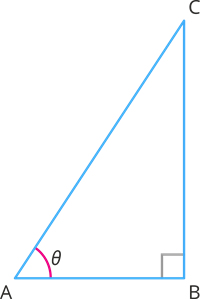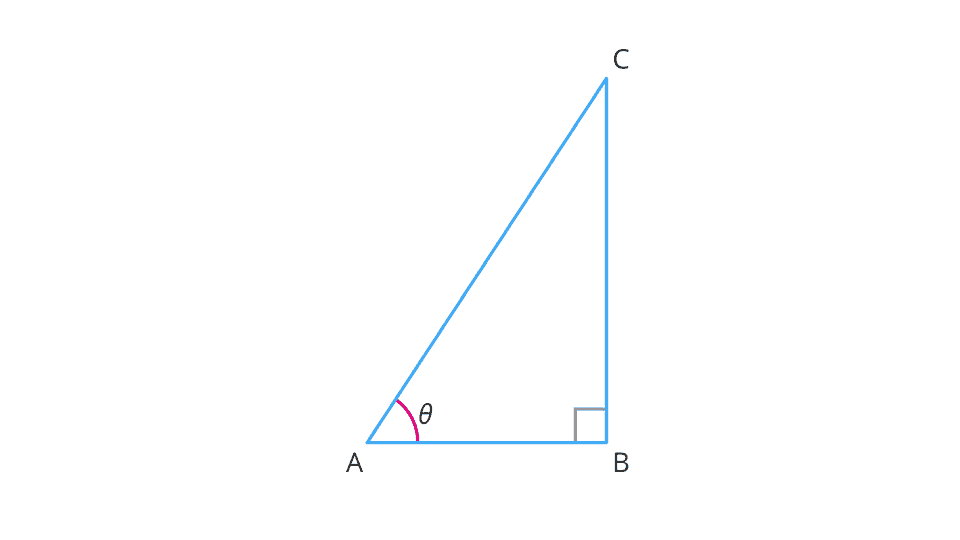PDF chapter test TRY NOW
We will derive the trigonometric ratios of 90^{\circ} using the right angled triangle ABC.

Let us now experiment with the given triangle concerning \angle A.
Increase the value of \theta to the extent it becomes 90 degree.

It is observed that as \angle A gets larger and larger, the point A gets closer to the point B.
That is, when \theta becomes very close to 90^{\circ}, the side AC becomes at most the same as the side BC.
This implies that the measure of AB becomes almost zero.
In the right angles triangle ABC we have:
Opposite side = BC
Adjacent side = AB
Hypotenuse = AC
Now, let us determine the trigonometric ratios when \theta = 90^{\circ} as follows.
- Sine 90^{\circ}:
\sin \theta = \frac{\text{Opposite side}}{\text{Hypotenuse}}
\sin \theta = \frac{BC}{AC}
\sin 90^{\circ} = 1 [When \angle A = 90^{\circ}, AC = BC.]
- Cosine 90^{\circ}:
\cos \theta = \frac{\text{Adjacent side}}{\text{Hypotenuse}}
\cos \theta = \frac{AB}{AC}
\cos 90^{\circ}= \frac{0}{AC}
= 0
- Tangent 90^{\circ}:
\tan 90^{\circ} = \frac{\sin 90^{\circ}}{\cos 90^{\circ}}
= \frac{1}{0}
= not defined
Using these basic trigonometric ratios determine their reciprocals as follows:
- Cosecant 90^{\circ}:
\text{cosec}\,90^{\circ} = \frac{1}{\sin 90^{\circ}}
= \frac{1}{1}
= 1
- Secant 90^{\circ}:
\sec 90^{\circ} = \frac{1}{\cos 90^{\circ}}
= \frac{1}{0}
= not defined
- Cotangent 90^{\circ}:
\cot 90^{\circ} = \frac{1}{\tan 90^{\circ}}
= \frac{0}{1}
= 0
Let us summarize all the trigonometric ratios of 90^{\circ} in the following table.
\sin \theta | \cos \theta | \tan \theta | \text{cosec}\,\theta | \sec \theta | \cot \theta | |
\theta = 90^{\circ} | 1 | 0 | not defined | 1 | not defined | 0 |
